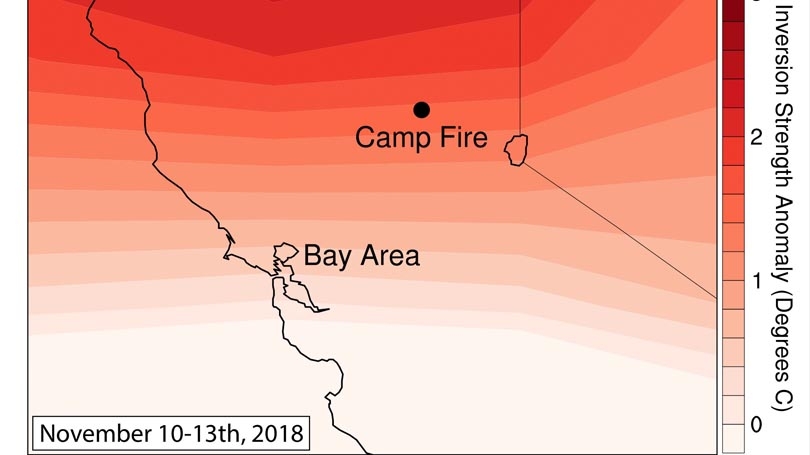California’s fire season has been lasting longer and growing more impactful with each passing year. This year, the fire season was dominated by the devastating Camp and Woolsey wildfires. The Camp Fire, concentrated around 15 miles from Chico, California, is now the deadliest fire in the state’s history, with more than fifty deaths and almost one thousand people missing. Between them, these fires have displaced more than one hundred thousand people.
Aside from the immediate destruction wrought by the fires themselves, they have also dramatically impacted the air quality in the rest of California. Smoke from the Camp Fire has polluted the air across the Bay Area, with air quality reaching “very unhealthy” levels in the first two weeks of the Camp Fire. Respirator masks have sold out of stores across the San Francisco area, and those who can’t afford to stay inside have had to withstand noticeably dirty air to go about their daily lives. In fact, the smoke from the wildfires was so severe and traveled so far that people noticed it on the East Coast.
Poor air quality can have dramatic health effects, especially for the very young and elderly. Breathing polluted air can lead to respiratory diseases like chronic obstructive pulmonary disease and bronchitis, and excess pollutant concentrations have been linked to 1-3 million excess deaths globally per year. A recent study found that 20-40% of all recent infant mortality in West Africa could be attributed to breathing polluted air.
One of the most dangerous air pollutants is PM2.5, which refers to particulate matter less than 2.5 micrometers in diameter. While other pollutants like ozone and PM10 (particulate matter less than 10 micrometers in diameter) can also harm human health, PM2.5 is particularly damaging since the particles are so small that they can cross the respiratory system into the bloodstream. The result can be significant damage to a person’s entire cardiovascular system. Wildfire smoke contains significant amounts of fine particulate matter like PM2.5, and scientists have linked thousands of deaths in the US each year to PM2.5 in wildfire smoke.
While the air quality effects of wildfires may seem obvious (who wants to breathe smoky air?), the role of the weather may be less clear. Poor air quality requires more than just a burning forest or coal-fired power plant; pollutants only harmfully accumulate if the weather conditions trap those pollutants near the surface where people can inhale them. One of the most important “ingredients” of such weather conditions is the lack of wind: strong winds ventilate pollutants away from their source, but weak winds allow those pollutants to accumulate in one place. Another ingredient of poor air quality is an “inversion,” or a cap of warm air over cooler air near the surface. This warm air blocks air at the surface from rising, preventing pollutants from being vertically lifted away from the near-surface environment.
These meteorological conditions have played important roles in California’s air quality in recent weeks. Wildfire smoke was able to accumulate over San Francisco because of stagnant weather characterized by weak winds that allowed particulate matter to hang over the city instead of being ventilated away. The presence of an inversion layer over the city added to these conditions and further prevented the smoke from dispersing.
In the face of growing public attention towards ever-more-destructive wildfires and the release of the fourth National Climate Assessment this November, climate change is the elephant in the room when it comes to discussions about the future of wildfires. While it’s not always possible to determine that climate change directly caused an individual event like the Camp and Woolsey fires, scientists have drawn convincing links between rising temperatures and the increasingly arid landscape of the American West to the changing frequency and severity of wildfires. Wildfire-generated air pollution in the western US has also been projected to increase in a warming climate.
As wildfires continue and temperatures rise, residents of California will keep experiencing the multifaceted hazards associated with wildfires, which include both the fires themselves and the public health costs associated with their smoke. Fortunately, scientists have made advances in understanding exactly how wildfire smoke affects public health and is in turn affected by meteorology and human management. For example, my research in Dartmouth’s Climate Modeling and Impacts Group focuses on the role of meteorology in determining the air quality of Beijing, which includes many of the same ingredients that have recently influenced pollutant concentrations in California. In both the United States and across the globe, future advances in this area hold the potential for forecasting and mitigating this major health hazard.
